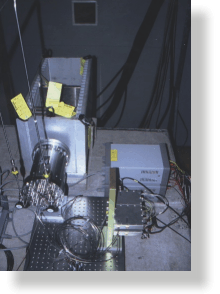|
A fast low-noise readout channel for the Beam Monitor of the Large
Hadron Collider
|
 |
|
|  |
P.F. Manfredi, M. Manghisoni, L. Ratti, V. Re,
V. Speziali,
G. Traversi
|
|
|
A segmented multi-gap ionization chamber will be used to measure the
luminosity of the Large Hadron Collider, which is being built at
CERN. The aim is to optimize the accelerator operation by monitoring
the beam geometrical parameters and to collect data of interest for
accelerator physics. The detector is expected to provide an accurate
measurement of the charge associated to single collisions of proton
bunches. The electronics will be located at about three meters from
the interaction region, where very high levels of radiation are
expected, and connected to the detector through a radiation-hard
cable. The characteristic impedance of the cable is matched using the
cold resistance termination technique, which takes advantage of the
input impedance of the preamplifier, adding considerably lower noise
than in the case of a traditional passive termination.
|

|
Due to the high
collision frequency which is expected at the LHC (40 MHz), a suitably
fast readout system, capable of processing times shorter than 25 ns,
is required. In order to comply with the system specifications,
including noise considerations, silicon and silicon-germanium bipolar
transistors with very high transition frequencies (fT>10 GHz) have
been characterized in order to select the preamplifier input
element. Laboratory tests have confirmed that the readout electronics
can be operated at the required speed. A prototype detector, including
the ionization chamber and the complete analog channel, has been tested
on the beam of the Super Proton Syncrotron at CERN in September
2001. The system was able to detect the charge signal released by a
single $pp$ interaction, which is the minimum expected value at the
collider interaction points.
|
|
|
|

